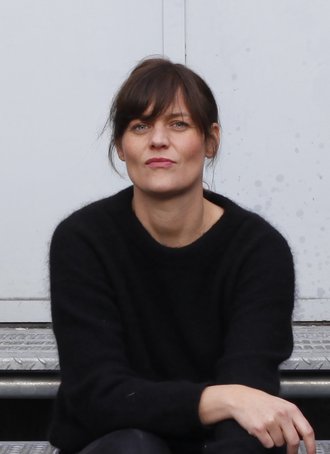»Reflecting on Architecture and Experimenting with the Design Process«: Christina Köchling Appointed Junior Professor of »Bauentwurfslehre«
On 1 August 2023, Christina Köchling was appointed to the newly created »Bauentwurfslehre« tenure track position in the Faculty of Architecture and Urbanism. Initially created as a junior professorship with a term of six years, the position is being transformed into a lifetime professorship following a positive interim evaluation. The professorship is one of eight tenure-track professorships at the Bauhaus-Universität Weimar that the university was able to launch as part of the federal-state programme for the advancement of young academics.
Born in 1979, Christina Köchling is a trained carpenter who earned her architectural degree from the Berlin University of the Arts in 2008. She then worked at Christ & Gantenbein Architekten in Basel until 2012. From 2012 to 2014, she was a scientific employee at Studio Krucker Bates at TU Munich and from 2016 with Prof. Fioretti at TU Berlin. Before her appointment at the Bauhaus-Universität Weimar, she held a one-year guest professorship at TU Dresden and a two-year guest professorship at BTU Cottbus. In 2015, she founded Felgendreher Olfs Köchling Architekten in Berlin together with her former fellow students Christian Felgendreher and Johannes Olfs.
Why did you choose Weimar? What interests you at the Bauhaus-Universität Weimar?
The Faculty of Architecture and Urbanism at the Bauhaus-Universität Weimar is both good and small, which I really appreciate. The quality of the teaching and communication between the students and instructors is greatly supported by the student workspaces for each design studio and the beautiful campus, which is a pleasure to have as a place of work and study. Our Berlin office employs several architects who studied in Weimar and contribute greatly to what we can accomplish through their solid and serious training. I think working at the Bauhaus-Universität Weimar is a great environment for me in terms of content, space, and collegial atmosphere, allowing me to contemplate architecture and experiment with the design process.
What are your research and teaching priorities for the coming years? How do you see the profile of the junior professorship developing?
From my everyday practice, I have identified six topics (for six years) that currently pose design challenges for architects: aesthetics of technology, recycling, local material, additive construction, visible supporting structure and »a little of everything«. I’m very interested in how these topics affect the design of today’s buildings. The themes have antecedents in the history of architecture. I would like to more closely examine this architecture, use it as a reference for the design debate in teaching and take a closer look at its individual buildings in research. It is very interesting to see how the same design issues take on new forms over time. It is important to me to communicate and interact with other disciplines in design and in the research seminar (and possibly also the Bauhaus.Module). Building technicians, structural engineers, construction physicists and aestheticians will be our guests and fellow researchers. We want to re-appropriate these subjects and grasp and process what we have imagined.
I see the tenure-track junior professorship as an opportunity for architects, alongside the pursuit of young independence and family, to narrow their focus in terms of content and to approach the demands of research as non-academics.
How will you be involved in teaching in your first semester in Weimar in the coming winter semester?
I am specifically offering a draft agenda related to the topic of the »Ästhetik der Technik« (aesthetics of technology) in the winter semester. The basis for my interest in the subject is my own project, in which we staged building services in a rudimentary manner with a focus on the recurring requirement to deliver low-tech building services concepts in competitions. I think the relationship with the elements can renew or change the relationship of human beings with nature. The draft agenda will be preceded by a study of buildings that deal with the elements of water, fire, air and earth in a low-tech energetic manner. Along the way, the students will also examine the architecturally atmospheric impact in model and film. Of interest is the extent to which the energy concept influences the floor plan and the specific expression in architecture.
What challenges do architects need to face today and in the future?
Because of climate change, rethinking and transforming construction is seen as a task of great urgency. It is very positive that this involves a common struggle in regard to what new directions are to be pursued and that »not knowing exactly how« this is to be done stimulates discourse. Examination of the material and the construction method is essential here. This perhaps even offers the opportunity to overcome formality and return to simpler and deeper values in architecture. It is essential to weigh priorities against each other in regard to the specific task so that we do not arrive at standardised solutions but instead bring together the location-specific with the universal. While it is also important to get the right funding in place at the legislative level, there needs to be a sense of openness and room for manoeuvre regarding the specifics of each project in order to bring forth buildings that are truly loved.
Website of Felgendreher Olfs Köchling Architekten
Further information on the tenure-track procedure at the Bauhaus-Universität Weimar

